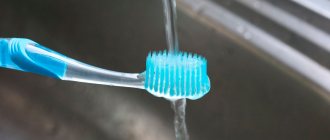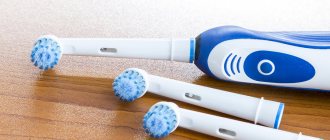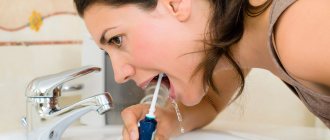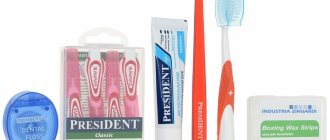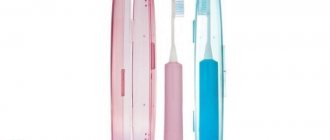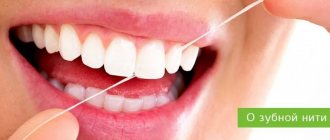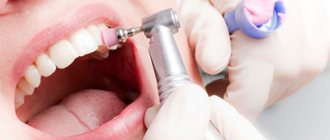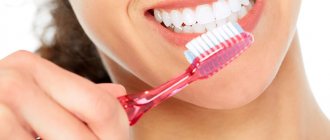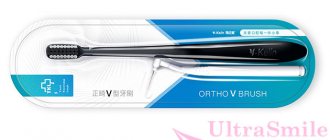Fecal coliform bacteria remain in the bathroom and are scattered throughout the room after the toilet user flushes; they can be a source of illness. You can get rid of the threat only with constant cleaning using antiseptics, but even this does not provide one hundred percent protection: particles can remain on door handles, combs and even toothbrushes.
In addition, devices for cleaning the mouth are already a breeding ground for pathogenic bacteria that remain after contact with the mucous membrane - in the future they can also cause infection. This is why it is so important to take care of their disinfection - we tell you how to approach the matter correctly.
Wash your hands before and after brushing your teeth
Bacteria and viruses are mainly transmitted through the palms - throughout the day they come into contact with many surfaces that are not always sterilely clean.
To stay safe during and after brushing your mouth, you should rinse your hands with soap and water for 20 seconds to remove any particles that might be left on the brush handle. After the procedure, you should also wash your palms to be on the safe side. In an interview with Insider, William Martin, president of the Maryland Dental Association, said that hand rinsing should, in principle, be a basic activity of every person - it will help reduce the risk of contracting viruses and infections, as well as minimize contamination of surfaces that a person touches.
What is important to know
Studies have shown that foods and drinks that contain acids soften tooth enamel when eaten. This is why you should not brush your teeth immediately after eating acidic foods or drinking acidic drinks. Such hygiene can lead to erosion of enamel tissue. To prevent pathological tooth wear, it is better to simply drink water or rinse your mouth with it.
You can brush your teeth only half an hour after consuming highly acidic foods and drinks. But the best option would be to cleanse immediately before eating.
Proper oral hygiene twice a day removes not only food debris, but also plaque, which can harm tooth enamel and gum tissue. Using dental floss daily can help clean the spaces between your teeth. This is the basis of oral health.
To accurately calculate the time spent brushing your teeth, use a timer. Guide the brush with gentle strokes. Clean your gum line and back teeth thoroughly. Carefully work on areas near fillings, crowns, implants and other prostheses. No hard-to-reach areas should be missed!
We offer the following scheme that will allow you to do everything correctly:
- Stage one is sequential cleaning of the outer surface of first the upper and then the lower teeth.
- Stage two is sequential cleaning of the inner surface of first the upper and then the lower teeth.
- Stage three – sequential cleaning of the chewing surfaces of first the upper and then the lower teeth.
- Stage four – cleaning the surface of the tongue. This will give your breath freshness.
Learn how to properly store your toothbrush
The American Dental Association says it should be rinsed thoroughly under running water to remove any food, toothpaste, or tartar. After this, you should leave the brush to air dry in a vertical position - most bacteria die in an aerobic (oxygen) environment.
It is important to store the brush not in a case or small container, but in a spacious place, for example, a cabinet next to a mirror: the fact is that pathogenic particles may remain on the boxes for the device. Also, the brush should be left as far as possible from the toilet and be sure to close the lid before flushing it. You should also avoid leaving multiple brushes nearby, as germs can spread when they come into contact.
How to care for a children's toothbrush. Storage, handling and replacement
Today we will learn how to care for a children's toothbrush, what storage and handling rules must be followed, and also when to replace an old oral care device with a new one
HOW TO CARE FOR A CHILDREN'S TOOTHBRUSH. STORAGE, HANDLING AND REPLACEMENT
Good afternoon, today we will learn how to care
for
a children's toothbrush
, what
and
handling
rules must be followed, as well as when it is necessary to
replace
old
oral
care device with a new one.
Toothbrush
- an item for personal use that performs the main cleansing function when caring for a child’s oral cavity. But your toothbrush needs to be cared for daily to ensure it continues to help us keep our teeth clean.
HOW TO CHOOSE A CHILDREN'S TOOTHBRUSH?
But do we know how to properly care for
for
a child's toothbrush
?
Usually we do not attach much importance to this issue and practically do not care
for
the toothbrush
while using it.
TOOTHBRUSH CARE, STORAGE AND REPLACEMENT
Toothbrush
easily contaminated and can serve as a source of infection. Therefore, it must be kept clean. Studies have shown that more than one hundred million bacteria can often be found on a toothbrush, including bacteria that cause digestive disorders (E. coli) and severe infectious diseases (Staphylococcus).
Microorganisms can get on a toothbrush mainly from:
— the oral cavity of its owner, where thousands of bacteria and microorganisms live;
- air, that is, the place where the toothbrush is stored.
When the immune system
the child is fine, she can easily cope with the microbes that live in the mouth before they lead to illness. We must understand that it is impossible to destroy all germs on a toothbrush. However, we can prevent or reduce the possibility of pathogenic microorganisms entering it.
WHAT ARE THE TECHNIQUES FOR CLEANING CHILDREN'S TEETH?
1. HOW TO PREPARE YOUR NEW TOOTHBRUSH FOR USE
What to do with a new toothbrush before use? Opinions on this issue differ: some simply wash the brush with hot water before the first cleaning, others pour boiling water over it, and still others disinfect it in special solutions.
Is there any point in pouring boiling water over the bristles of a new toothbrush? How to prepare a new toothbrush?
Most pediatric dentists recommend that a new toothbrush be thoroughly washed with hot water before first use, then lathered and left lathered for several hours. Afterwards, rinse the brush well with warm water.
Experts say that there is no need to boil or pour boiling water over a new brush. Pouring boiling water will not help remove microorganisms from the bristles of a toothbrush. Harmful bacteria such as staphylococcus or streptococcus can only be removed by boiling for 10 minutes. But after such a long exposure to high temperatures, the brush may lose its original shape, and the bristles may fall out and soften. Which will make the toothbrush unsuitable for further use.
According to GOST, a new toothbrush may contain 1000 CFU/cm(3) of microorganisms. This indicator is not capable of causing harm to the body.
Therefore, there is no point in treating a new toothbrush with boiling water if you are using a new toothbrush from a sealed package.
Each child should have their own toothbrush. You cannot brush your child’s teeth with someone else’s toothbrush (including your brother’s/sister’s brush or your own). This also applies to electric toothbrush heads: each one should have its own brush head.
You should not infect your child's oral cavity with your own oral microflora.
2. RULES FOR STORING A CHILDREN’S TOOTHBRUSH
Pay attention to how and where to properly store a children's toothbrush.
Where to store a children's toothbrush and where not to store it?
It is important to choose a suitable storage location. Best way to store your toothbrush
in
an open dry place
. And don’t forget about ventilation and good ventilation of the room so that the brush dries completely between cleanings.
The most common, but inappropriate place to store a toothbrush is a locked cabinet near the bathroom sink. This is not the best place, since it is dark, warm and high humidity, which means ideal conditions for the growth of all kinds of bacteria.
Another poor storage location is on the sink or on an open shelf if they are located in close proximity to the toilet in a shared bathroom. According to the results of research by British scientists, with each flush of water, thousands of bacteria enter the air, which spread within a radius of up to 2 meters and can settle, including on a toothbrush. Of course, the toilet lid is a barrier to the spread of intestinal bacteria, but not all family members have the habit of closing it, then why risk the child’s health?
How to store a children's toothbrush?
Another important point is storage
toothbrush. The brush should be stored in an upright position, with the handle down and the bristles up, to avoid contamination from other surfaces.
Moreover, toothbrushes
It is recommended to store all family members separately from other toothbrushes so that their bristles do not touch. That is, brushes should be stored in individual glasses (containers) for each family member; in a glass with holes (cells) for different brushes; in a wall-mounted brush holder like a strip with recesses or separate caps, etc. This is due to the fact that germs from one brush can easily move to another when they come into contact. This is especially true for toothbrushes for adults and children. It is extremely undesirable to transfer flora from an adult brush to a child’s one. This also applies to the period of illness of one of the family members. If one family member gets sick, the rest can become infected through the brush.
It is also important to follow one more rule
– keep the toothbrush dry. You should not cover the brush with a cap or put it in a case immediately after brushing your teeth, as this will create excellent conditions for the active growth of bacteria - dark, humid, warm. In general, the case and cap are a travel option. Storing a toothbrush at home in a travel case or cap is harmful, they are dark and have no holes for ventilation, the brush does not dry out, which contributes to the proliferation of microbes harmful to the body. If you use wall holders and brush caps, make sure they have holes for ventilation.
The toothbrush should be stored in an open, well-ventilated or ventilated area with low humidity and proper lighting. When dry, in an individual container in a vertical position with the bristles facing up.
Remember, microorganisms prefer dark, damp and warm places.
Disinfect the brush
If you want to take extra precautions, or if you dropped the device on the floor, you can use hydrogen peroxide or mouthwash.
The first solution is a good antiseptic that destroys harmful particles picked up by the brush from the ground. The second contains alcohol, menthol and eucalyptol, which also help get rid of bacteria. To do this, rinse the bristles under running water, pour a little antiseptic into a glass - enough to cover the brush head, and soak the device for 10-15 minutes. Afterwards, rinse it again and leave it to dry in the open air.
Read on topic:Why and how to cleanse makeup products
How to brush your teeth correctly?
It is a mistaken idea that everyone can do this. There are a number of rules, many of which are either unknown or ignored. However, only compliance with them guarantees effective cleaning of the enamel: • Carrying out hygiene procedures not only at home, but also at the dentist. • Rational selection of brushes and paste. • Using the optimal teeth brushing method. • Using dental floss, brushes and mouthwash. • Taking into account the condition of the gums, the presence of braces and dentures. • Compliance with the rules for storing, cleaning and replacing brushes.
Tablets for determining plaque will help you understand whether you have achieved your goal. They demonstrate whether unwanted deposits are present on the enamel. They also suggest which areas are not being worked through carefully enough.
Use ultraviolet light
According to a study published in the American Journal of Dentistry back in 2008, UV light kills bacteria and some viruses by disrupting their molecular bonds. It also found that light was slightly less effective than alcohol or peroxide, but if you have an ultraviolet lamp on hand, this is a good way to use it.
Leave the brush next to it for a few minutes, then air it out in the open air. We do not recommend using a dishwasher or microwave as an alternative - the high temperature inside the equipment can damage the brush or even melt it.
Proper brushing of teeth: sequence of movements
For hygiene purposes, you need to accustom yourself to a certain sequence of movements.
After squeezing the paste onto the brush, you must: • apply it to the teeth at an angle of 45 or 90 degrees; • pass each one 3-4 times in the direction from the gums to the cutting edge; • treat chewing surfaces with circular movements; • Allow at least 30 seconds of brushing for each half of the jaw. Depending on the location of the brush and the direction of movement, there are three methods of brushing teeth. The most famous (90 degree brush, top to bottom movements) is the Leonard method.
The Bass method involves choosing an angle of 45 degrees and making vibrating movements. It is good because the bristles penetrate into the interdental spaces and partially work out the contact surfaces. With the Fones method, an angle of 90 degrees is taken and the brush moves in a circle. This further massages the gums, which improves blood circulation and protects against inflammatory processes.
Keep your brush safe while traveling
To ensure that it does not become a breeding ground for bacteria, get a separate case or cosmetic bag where only the cleaning device will be stored.
Upon arrival, unpack your things, leaving the brush in the bathroom and rinsing it first. Before you leave, rinse it, dry it thoroughly, disinfect the storage case and place the brush in it.
More toothbrush care tips from the experts
Professional dentists will probably advise you to follow a few additional recommendations.
- Wash your hands before and after brushing your teeth to prevent the spread of germs.
- Buy a new toothbrush after a cold or other illness.
- Use two toothbrushes alternately. This should be done to ensure that each bristle has a chance to dry completely before being used again.
- Do not share toothpaste with a sick person.
Do not disinfect your toothbrush in the microwave.
Also, under no circumstances should you put a toothbrush in a microwave oven or put it in boiling water for disinfection. Using these methods, most bacteria can be destroyed, but the toothbrush will suffer.
Rules for storing removable dentures
One of the main rules of wearing removable dentures is that they must be removed at night. It is not advisable to sleep with them, since during sleep there is a possibility of their premature deformation. To store structures, it is better to use a special container that is equipped with a hermetically sealed lid. The protective box must be clean, dry and placed in a place inaccessible to children or pets. If the prosthesis is removed for a long time, it should be placed in a container with a disinfectant solution.
If you follow the recommendations for caring for removable dentures, you can significantly extend their lifespan. Proper oral hygiene will increase the comfort in using orthopedic structures and minimize the risks of complications when wearing them.
How often to change
Any thing and hygiene item, including a toothbrush, has its own service life. Over time, the bristles on it wear off, become shaggy and deformed. Such a brush can damage not only the enamel, but also the gums. If the toothbrush has not changed in any way in appearance, but has been used for a very long time, it is also dangerous to use it. Bacteria will actively multiply in its villi, which can provoke the development of various dental diseases.
You need to start brushing your teeth from an early age. The baby's first teeth need to be brushed using a special silicone fingertip. When the baby grows up, he needs to buy a children's toothbrush. Be sure to change it every two to three months. If you use it longer, caries, stomatitis or other dental diseases may occur.
Professional hygiene
If the plaque has already turned into stone, only a dentist can remove it. At the same time, it is not possible to completely remove plaque even if you follow all the rules for brushing your teeth. Therefore, everyone who cares about their dental health is recommended to visit the dentist twice a year and have their teeth professionally cleaned. In advanced cases, gingivitis also forms, a painful inflammation of the gums.
What does professional oral hygiene include?
The first stage of oral care in the dental office is diagnosis and analysis of existing problems. Based on these, procedures are prescribed, which most often include cleaning plaque and stone (if necessary, with anesthesia).
Pigmented plaque is cleaned with a special Air Flow apparatus, which operates using a jet stream of aerosol containing sodium bicarbonate.
In modern dental clinics, ultrasound is used during cleaning, which removes soft and hard deposits from the enamel. In this case, the teeth are not damaged, plaque and stone are gently peeled off from visible surfaces.
The next stage is the treatment of intergingival spaces. This is a manual procedure that requires care and professionalism from the dentist.
After the stone is removed, the enamel is polished to protect it from bacteria. This is done using polishing pastes and special brushes and rubber bands.
Professional cleaning ends with the application of fluoride-containing varnish to the enamel, which provides additional protection and makes teeth less sensitive. The price of such a procedure depends on many factors, but you should not skimp on dental health.
